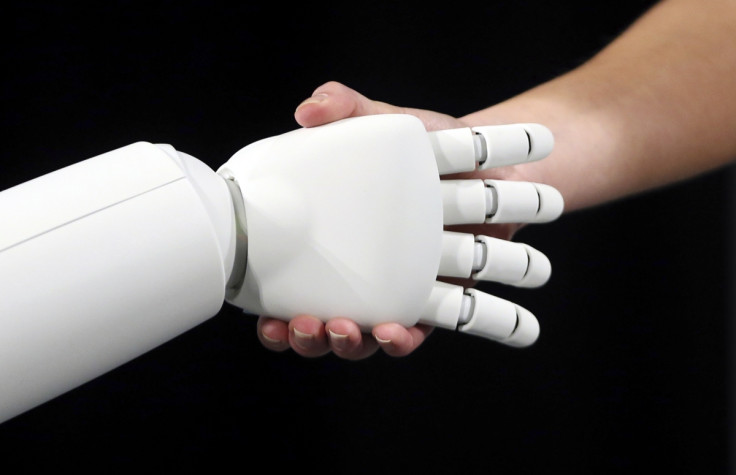Chatbots for HR, staff wellbeing and mental health
Dean Withey is CEO of ubisend

A recent government-sponsored report suggested 300,000 jobs are affected by staff dealing with mental health issues, leading to organisations losing between £33bn and £42bn a year.
The Thriving at Work report, commissioned by Prime Minister Theresa May, sets out guidance for employers on how they can better support all employees, including those dealing with mental health problems. The report goes a long way to quantify and demonstrate the return on investing in mental health support services within the workplace.
While the report's recommendations are valuable and hugely important to businesses, it does place an additional burden on the human resource function to do more, with less.
Although more typically known as a staff-facing and personable role, demand to deliver both transactional and transformational results requires the development and integration of complex communication and knowledge-based computer systems. These systems enable HR to manage the administrative tasks, processes and data efficiently, freeing up time so that it can meet the more strategic, forward-looking, goals.
While this sounds good on paper, all too often HR finds itself in an out-of-date implementation cycle. A new demand on HR comes along, like mental health monitoring and support, which requires further technology, systems or processes. Such implementation takes time and resource to develop and apply, and by the time it is ready, a new demand on HR arrives. Hence, the out-of-date implementation cycle continues.
To support, and help nullify this cycle, forward-looking organisations are looking to artificial intelligence (AI) powered solutions to power-up their HR resource.
An example is conversational software, the technology that turns information stored in computers into natural language conversations. It is a computer programme that staff talk to naturally, just how they would speak to a member of the HR team. The computer software learns whatever the organisation teaches it, things like the contents of the employee handbook, benefits packages or work from home policies. Staff then talk to this software through already integrated communication channels, like Skype for Business, Slack, website live-chat or through the HR portal. The programme is online all day, every day. It never gets tired, says something inappropriate or turns up late to work.
This technology is nothing new; it has been in development for decades and only now are we starting to realise what it can and can't do.
In the context of HR, it can act as the first point of contact and deal with the mundane, routine questions that HR staff often respond to with templated or copy-pasted answers. It works a bit like triage, the programme tries to answer the question for itself, stopping an enquiry reaching the HR inbox, if it cannot help, it can seamlessly handover to a member of HR to intervene, take a message or arrange a meeting.
To support mental health initiatives, the programme can deliver thoughtful and personal communication on mental health services and content. Typically, when dealing with mental health problems, the first step is internal. It is the realisation something may be wrong and admitting it to yourself. It is the self-diagnosis, the doubt, the not knowing if you need help. At this stage, few people are ready to pick up the phone, arrange a meeting or speak to someone in HR. They have probably never even said any of their concerns out loud to friends or family.
A text conversation with a machine would be an excellent way for people to ask questions and discuss issues they might feel uncomfortable talking through with HR. It is a computer; there's no gender, age or cultural barriers, no emotions (which for some topics is a good thing), no judgements. The programme would deliver evidence-led, always accurate and on-demand information.
Perhaps someone may feel better asking a machine about the bereavement policy or stress-related leave than bringing it up with a line manager or HR. It can be personal and private and, when they're ready, the programme can escalate matters and make appointments with whomever they need to action and deal with the problem.
This technology is designed to answer the low-hanging fruit of inbound enquiries to HR instantly. It presents the opportunity to do more with less, to enable HR staff to deal with the larger complicated queries and have the time for the 'around the coffee machine' advice and support. They can keep their door open and have the opportunity to focus on the future rather than working their way through a never-ending support ticket system.
The Thriving at Work report delivered specific actions an organisation can take to support mental health in the workplace. Not all of them are suitable for machine-intervention, but three do stand out as ripe for AI-enabled support:
- Build mental health awareness by making information and support accessible
- Encourage open conversations
- Routinely monitor employee mental health
Conversational software is flexible; it can be retrained to learn new best practises, procedures and policies. It is taught whatever the organisation needs it to know and requires little integration with current computer systems. This makes it much less susceptible to the out-of-date implementation cycle.
The report stated that people dealing with long-term mental health problems were leaving jobs at twice the rate than other colleagues. Perhaps such AI technology described can help us better support those that need it.
Dean Withey is CEO of ubisend






